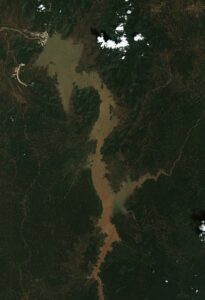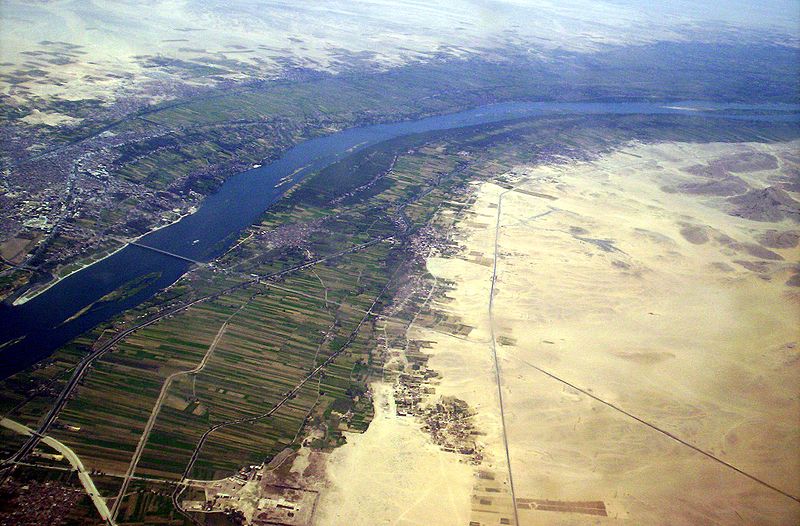The Situation as it Stands:
Since the second of April, 2011 Ethiopia has been working on one of the biggest projects in a series of initiatives to industrialize the country. This project is the Grand Renaissance dam, a hydroelectric power plant built into the mountains near the border with Sudan, looming high over the Blue Nile.
It has been the source of great controversy as the Nile nations of Egypt and Sudan have disputed the Ethiopian construction – and threats of war have been made by both parties. So, what is there to know about the Grand Renaissance dam?
Decades before this in 1959, when all three nations had only recently attained independence a treaty was signed between Sudan and Egypt, which was supposed to legally set the amount of water the two nations would be entitled to.
The recent controversy has been due in part to the perceived violation of this treaty by Ethiopia. This has not been aided by the uncovering of possible major environmental impacts to Egypt, and to a lesser extent, Sudan.
The dam is part of a series of projects partially funded by China, a lukewarm ally of Ethiopia and keen sponsor of many African industrialization projects. China has invested a grand total of 672 million dollars into the construction of the dam, and Chinese owned construction companies, such as the Gezhouba group, an engineering firm based in Wuhan and Voith Hydro Shanghai, a hydroelectric power plant designer have helped in the construction of the dam.

What might go wrong:
The first thing to mention when talking about the controversy with this project is the environmental impact, which Egypt considers utterly unacceptable. It is possible that a 25 percent reduction in water flow through the Nile could occur, this would seriously impact multiple areas of the Egyptian economy, state and way of life.
Firstly, the lower water levels would disrupt a possible two million farmers along the Nile, seriously harming Egyptian agricultural output.
Secondly, the reduced flow along the Blue Nile would harm Egypt’s energy supply, as they generate a sizable portion of their electricity through Hydroelectric power, and the dam could reduce that generated power by 25 to 40 percent.
Finally, it could compound an already big issue in Egypt, which is that their water supply is heavily impacted by evaporation – and the slower flow caused by the dam would only exacerbate issues with the Aswan lake and its hydroelectric dam.
Sudan’s now ousted president Omar Al-Bashir was originally in favour of the dams construction, however later in his regime switched his support for Egypt, seemingly becoming worried at the possible impact the dam may have on Sudan. Saying in an interview on the dam, “Sudan is totally committed to the 1959 agreement, which established the parameters for water-sharing between Sudan and Egypt”.
Sudan has significantly increased its support for Egypt’s position and has joined Egypt in sabre-rattling in recent years and now fully opposes the construction of the dam; this could lead to a destabilization of the region if Egypt and Sudan were to militarily cooperate.
What might go right:
Ethiopia is a nation where 65 percent of people are not connected to the national grid, or are without power. This is a serious issue that this dam will help to solve, the electrification of Ethiopia is necessary for its industrialization and the dam being constructed has not only employed hundreds of local workers but will also markedly improve the standard of life in the nation.
If the possible environmental damage of the dam can be mitigated through good planning and a rigorous agreement between the Nile nations then it could act as a great improvement for the region.
Once constructed the dam will allow Ethiopia to further industrialize, and with Chinese help the future could be very bright for the nation, as they are already one of the fastest growing economies in the world at around 6 percent growth yearly.
This all combines to make it very possible that Ethiopia could become a major player in the horn of Africa and the east African region as a whole; possibly acting as an economic and industrial counterbalance to a future East African Federation.
A conclusion:
There are ways to make sure that both sides are fairly represented, Ethiopia of course has the right to pursue industrialization however a compromise must be reached.
Egypt is actively threatened by the possibility of a serious reduction to the Nile’s flow, in a nation where 95 percent of farms are irrigation based and require the flow of the Nile to be predictable the possibly severe changes are understandably unacceptable. Egypt’s president el-Sisi stated during a press conference, “I am telling our brothers in Ethiopia, let’s not reach the point where you touch a drop of Egypt’s water, because all options are open,”.
It is possible to take a conservative approach to the filling of the dam, to make sure that the Egyptians and the Sudanese don’t suffer unnecessarily and the Ethiopians are still able to use the blue Nile for generating power.
However as it stands, whilst a UN committee has been set up to deal with this dispute there has been no agreement, and if this issue is not solved it could become a serious flash-point in an increasingly unstable world.
If you like our content please keep us going for as little as £2 a month https://dorseteye.com/donate/












